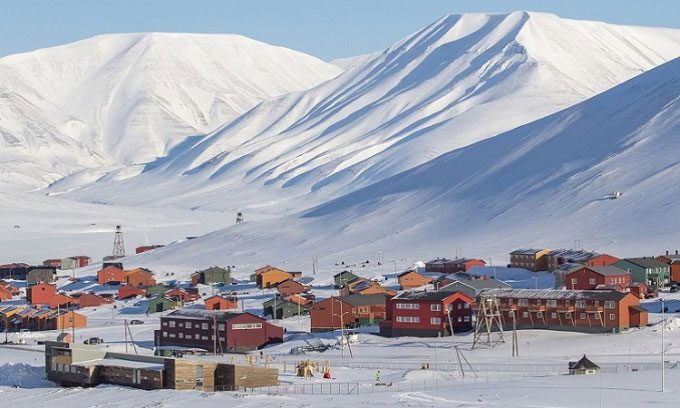Deep within the Arctic Circle, the town of Longyearbyen on the Svalbard archipelago, the northernmost inhabited settlement in the world, is warming at a rate six times faster than the global average.
Residents of Longyearbyen often carry firearms whenever they venture away from the main roads due to the risk of encountering polar bears. The decline in sea ice has reduced their hunting grounds, making it increasingly difficult for polar bears to find seals. Consequently, more bears are wandering into residential areas in search of food and have begun to prey on reindeer.

The town of Longyearbyen is the capital of the Svalbard archipelago. (Photo: Audley).
Experts from the Norwegian Polar Institute have calculated that Svalbard is warming six times faster than the global average, as reported by BBC on October 27. Temperatures have risen by 4 degrees Celsius over the past 50 years. This increase in temperature has led to unprecedented thawing of the permafrost, posing landslide risks that threaten the community in Longyearbyen during the winter months. In the summer, landslides are likely to obliterate everything in their path. One of the most telling indicators of human-induced climate change is the local cemetery, where the remnants of a major landslide still remain, nearly sweeping the whole cemetery into the river below.
While observing wildlife through binoculars, Arctic explorer Hilde Fålun Strøm spotted three polar bears gathered at the edge of a glacier. According to Strøm, to survive, polar bears must be excellent hunters as their primary food source, seals, is gradually disappearing. The sea ice that both seals and polar bears rely on for feeding is also shrinking. Since the 1980s, summer sea ice has decreased by half, and some scientists are concerned that the ice will completely vanish by 2035.
Kim Holmén, a special advisor at the Norwegian Polar Institute, has studied Svalbard for over 40 years. He pointed to the top of a hillside, indicating that it was the remnant of a glacier from 100 years ago. Compared to that time, the glacier’s height has decreased by an estimated 100 meters.
Despite its remote location, Svalbard remains a geopolitical hotspot. Currently, the conflict in Ukraine is disrupting cooperation between scientists in Russia and the West, further undermining the fight against climate change.



















































